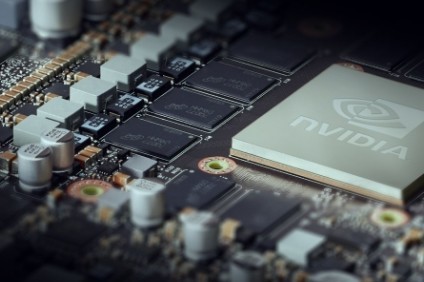Is chip party coming to an end?
As chip war intensifies, overcapacity expected by 2023
By Kim Byung-wookPublished : Dec. 21, 2021 - 16:00

COVID-19 has been a perfect Christmas gift for major chipmakers this year, as the pandemic brought an unprecedented chip demand across the spectrum, from smartphones, laptops and PCs to data centers.
To meet the surging demand, foundry giants -- TSMC, Samsung Electronics and Intel -- together have pledged to spend hundreds of billions of dollars throughout the next few years to expand their production capacities.
But market watchers warn caution over the aggressive expansion, citing that the semiconductor industry has a track record of suffering price collapses after over-expanding.
According to a recent report from IDC, a Singapore-based market research firm, the global chip market is projected to normalize and balance by the middle of 2022, with a potential overcapacity in 2023, as large-scale expansions will come online starting the end of 2022.
“Chip shortages are expected to continue easing through the fourth quarter of this year as capacity additions accelerate,” the IDC report said.
Semiconductor Intelligence, a consulting firm specialized in chips, forecasts that the global chip industry will see a possible decline starting 2023.
According to Semiconductor Intelligence, which analyzed the correlation between chip production expansion and market growth from 1984 to 2021, whenever the global semiconductor industry increased production capacities greater than 27 percent on-year, a decline would come 2-3 years later.
Considering that the chip industry saw its capacities grow 25-28 percent this year, growth will decelerate in the coming years, the firm suggests.
This year, the big three foundries, TSMC, Samsung and Intel, together accounted for over half of the chip industry’s capital spending. Foundry dominant TSMC this year spent $30 billion on expansion, with an additional $70 billion earmarked for the next two years. Samsung spent $30 billion this year, with $67 billion more on the way before the end of 2023. Intel plans to spend $25 billion to $28 billion next year, a greater commitment from this year’s $18 billion to $19 billion.
Such massive investments could pay off as long as COVID-19 risks persist and uphold demand, but Semiconductor Intelligence projects that the market will stabilize after a higher-than-normal growth this year. The chip industry grew 23-27 percent this year, but as the market recovers from the worst of the pandemic, the chip industry is expected to grow 10-14 percent next year.
Over market concerns that the chip market’s growth will decline after the pandemic, other experts suggest that the market may slow down, but will ultimately maintain its upward trajectory.
“Of course, when the pandemic ends, the global chip market will experience ups and downs (in growth), but the COVID-19 outbreak has fundamentally changed our daily lives, which are now unimaginable without chips. From EVs to 5G, the demand for chips will continue to grow with or without the pandemic, or whether there’s omicron or another version of COVID,” Kim Yang-pang, a researcher at the Korea Institute for Industrial Economics and Trade, said.








![[Graphic News] More Koreans say they plan long-distance trips this year](http://res.heraldm.com/phpwas/restmb_idxmake.php?idx=644&simg=/content/image/2024/04/17/20240417050828_0.gif&u=)
![[KH Explains] Hyundai's full hybrid edge to pay off amid slow transition to pure EVs](http://res.heraldm.com/phpwas/restmb_idxmake.php?idx=644&simg=/content/image/2024/04/18/20240418050645_0.jpg&u=20240419100350)





![[From the Scene] Monks, Buddhists hail return of remains of Buddhas](http://res.heraldm.com/phpwas/restmb_idxmake.php?idx=652&simg=/content/image/2024/04/19/20240419050617_0.jpg&u=20240419175937)

![[KH Explains] Hyundai's full hybrid edge to pay off amid slow transition to pure EVs](http://res.heraldm.com/phpwas/restmb_idxmake.php?idx=652&simg=/content/image/2024/04/18/20240418050645_0.jpg&u=20240419100350)

![[Today’s K-pop] Illit drops debut single remix](http://res.heraldm.com/phpwas/restmb_idxmake.php?idx=642&simg=/content/image/2024/04/19/20240419050612_0.jpg&u=)